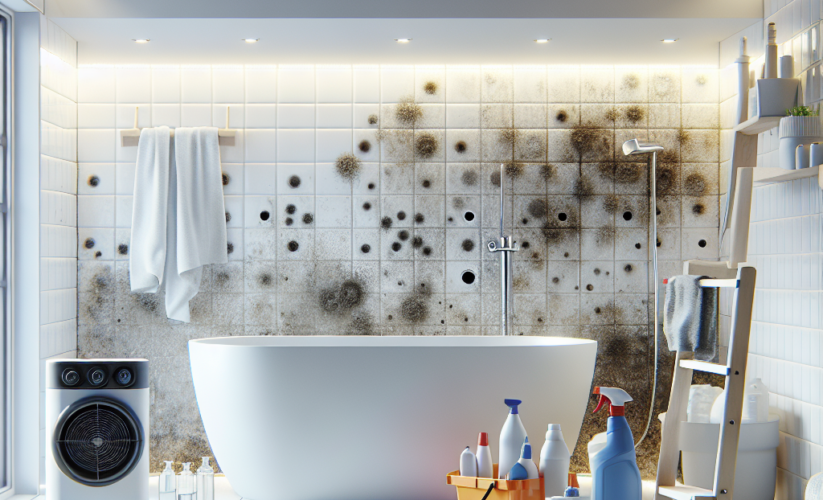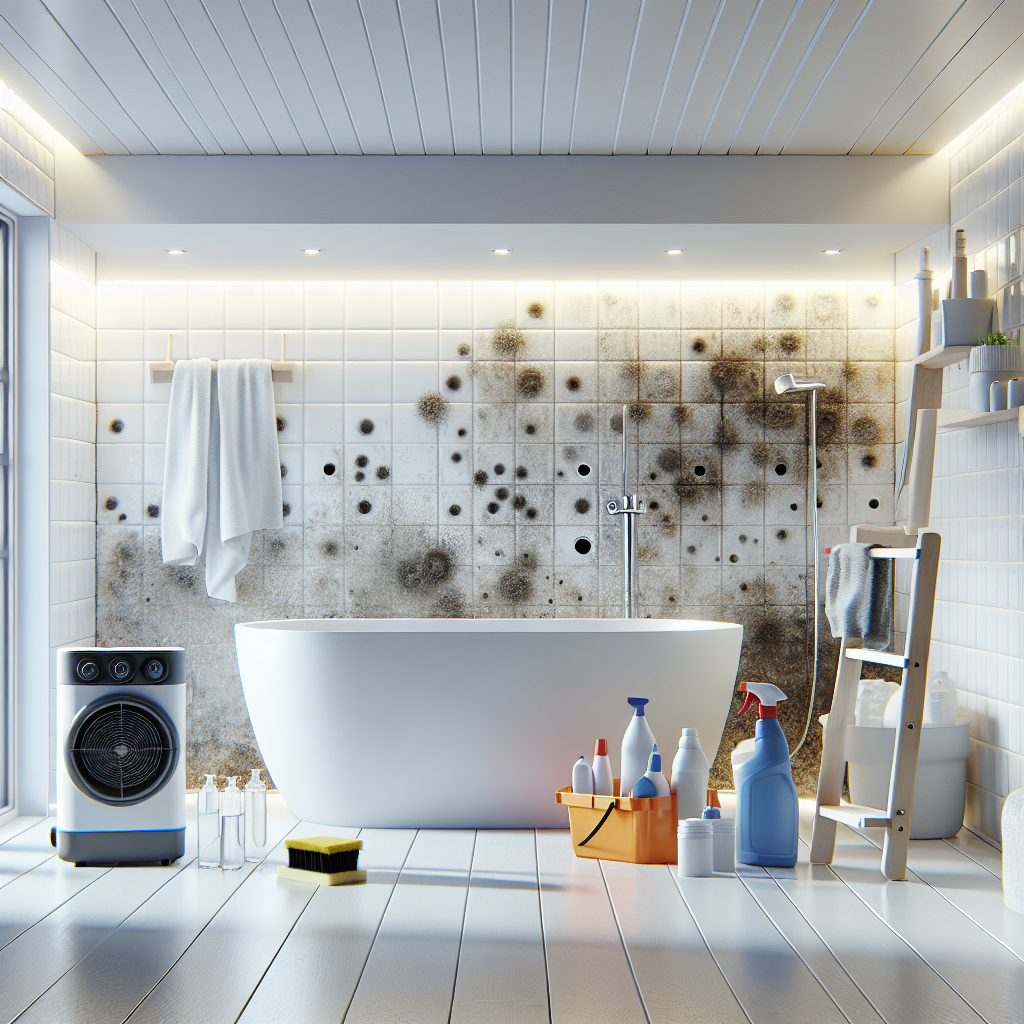
4 Proven Ways to Remove Schimmel Wand Quickly and Easily
Schimmel Wand: Understanding and Managing Mold in Your Home
Mold, often referred to by its German term “schimmel,” can wreak havoc on our homes, particularly on walls. **Schimmel wand** not only affects the aesthetic appeal of your space but also poses health risks and compromises structural integrity. In this article, we will delve into the causes, prevention, and treatment of mold on walls, offering practical advice and actionable solutions to restore your living environment.
Understanding Schimmel: What Causes Mold on Walls?
Understanding the root causes of **mold on walls** is crucial in preventing its growth. Mold thrives in environments that are damp, dark, and poorly ventilated. Common sources of moisture include leaky roofs, pipes, or condensation from humid areas like bathrooms and kitchens. Poor insulation can also contribute to the problem, allowing warm air to meet cold surfaces, thereby creating condensation conducive to mold growth. It’s important to identify these sources to implement effective strategies for mold prevention and control.
The Role of Humidity in Mold Growth
One of the primary factors contributing to **mold on walls** is high humidity levels. Ideally, indoor humidity should be maintained between 30% and 50%. When humidity levels exceed this range, mold spores can flourish. Regularly using a hygrometer can help monitor your home’s humidity. If levels are too high, consider using dehumidifiers or increasing ventilation with exhaust fans to ensure proper airflow. This proactive approach helps create an inhospitable environment for mold.

Common Locations for Mold Growth
While mold can grow anywhere, some places are more susceptible than others. Common sites for **schimmel wand** include corners of rooms, basement walls, and areas around windows. These locations are typically prone to moisture accumulation. For instance, if your bathroom lacks adequate ventilation, you may find mold around the tub or on shower curtains. Regular inspections of these vulnerable areas can help catch mold growth early and prevent it from spreading.
Preventing Mold on Walls: Effective Strategies
Prevention is key when dealing with **schimmel wand**. Implementing effective strategies can significantly reduce the likelihood of mold growth in your home. First and foremost, ensure that your home is well-insulated. Proper insulation can prevent temperature fluctuations that lead to condensation on walls. Additionally, regularly checking for leaks in plumbing, roofs, and windows can identify potential moisture sources before they become problematic.
Improving Ventilation to Combat Mold
Another important technique for preventing **mold on walls** is improving ventilation throughout your home. This involves ensuring that areas like kitchens, bathrooms, and laundry rooms are adequately ventilated to reduce humidity levels after activities like cooking or showering. Install exhaust fans and consider keeping windows open during dry days to promote air circulation. This can drastically reduce moisture buildup and create an environment less conducive to mold growth.
Regular Cleaning and Maintenance
Incorporating cleaning routines to eliminate dust and debris also plays a significant role in mold prevention. Using mold-resistant products during cleaning can help, particularly in areas where moisture accumulates. For instance, using biodegradable mold blockers in your bathroom can provide an added layer of protection. Regularly dusting surfaces, especially those near potential moisture sources, minimizes mold spore accumulation in your home.
Treating and Remediating Mold on Walls
If you’ve discovered **schimmel wand** in your home, it’s essential to act quickly to remediate the issue effectively. The first step is to identify the cause of moisture and eliminate it. Once you resolve the source, you can focus on removing the mold. Depending on the extent of the mold growth, you may choose to address it yourself or seek professional help.
DIY Mold Removal Techniques
For small patches of **mold on walls**, a DIY approach can often suffice. Make a mixture of water and detergent or a specialized mold removal solution, and scrub the affected area with a brush. Always wear protective gear, such as gloves and masks, to avoid inhaling mold spores. For porous surfaces, like drywall, it may be necessary to replace the material if the mold has penetrated deeply.

When to Call a Professional
If mold covers a large area or if you experience persistent moisture problems, it’s advisable to call a professional mold remediation service. Professionals have the tools and knowledge to assess the situation comprehensively and provide long-term solutions. They can also help identify any underlying issues contributing to mold growth, ensuring your home remains free of this persistent problem.
Key Takeaways
- Identify and eliminate sources of moisture to prevent **schimmel wand**.
- Maintain appropriate humidity levels and improve ventilation throughout your home.
- Regular inspections and cleaning can prevent mold spore buildup.
- Use DIY methods for small mold patches, but call professionals for larger infestations.
FAQ
1. What does schimmel wand mean in English?
The term **schimmel wand** translates to “mold on walls” in English. It refers to the growth of mold or mildew on interior surfaces, often a result of high humidity or moisture issues.
2. How can I tell if I have mold on my walls?
Signs of **mold on walls** include visible discoloration, often green or black, a musty odor, and in some cases, peeling paint or wallpaper. If you notice any of these indicators, it’s essential to investigate further.
3. Can I paint over mold on my walls?
It is not advisable to paint over **schimmel wand**. Painting over mold will not eliminate the problem and can lead to further issues as the mold continues to grow beneath the paint. Always remove the mold first before painting.
4. What are the health effects of mold exposure?
Exposure to **mold on walls** can lead to various health issues, including respiratory problems, allergies, and skin irritation. Individuals with pre-existing conditions such as asthma or weakened immune systems may experience more severe reactions.
5. How can I prevent mold growth after removal?
To prevent **mold on walls** after removal, ensure you address the moisture source, improve ventilation, and maintain lower humidity levels. Regular inspections and cleaning can also help keep mold at bay.
By understanding the causes and effective management of **schimmel wand**, homeowners can create a safer and healthier living environment. Implementing these strategies will help ensure that mold remains a distant concern rather than a persistent problem.